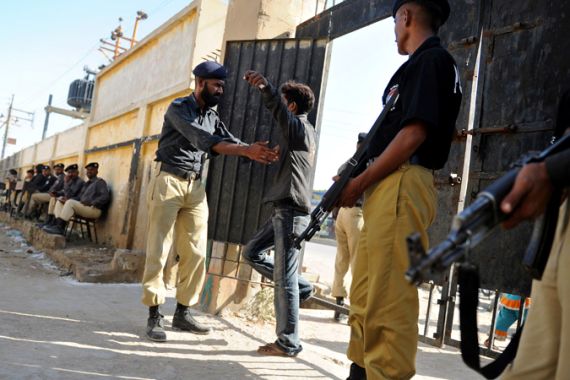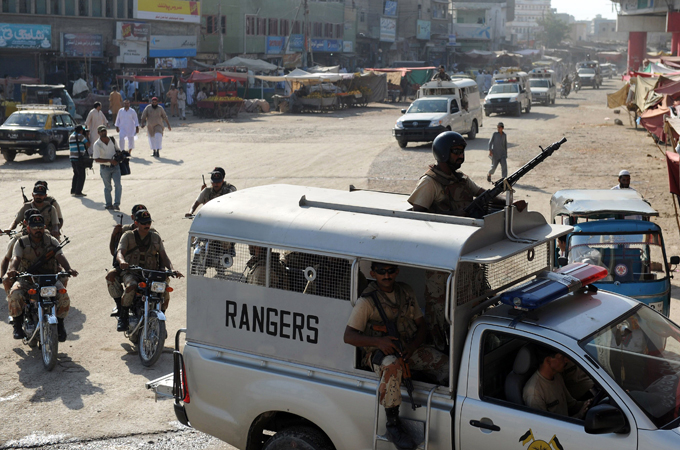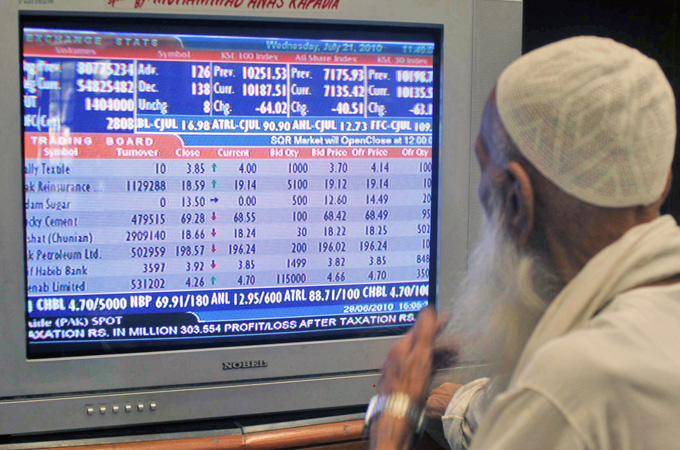Karachi: A volatile mix
The vast Pakistani port city is gripped by sectarian, political, and ethnic violence.

 |
| Karachi, Pakistan’s largest city, has a long history of political, ethnic, and sectarian violence [AFP] |
Multi-ethnic Karachi is the capital of Sindh province and has a metropolitan population of around 16 million people.
Mohajirs, descendants of Urdu-speakers who migrated from India after the creation of Pakistan in 1947 are the largest ethnic group.
Karachi is also home to the largest concentration of ethnic Pashtuns outside Khyber-Pakhtunkhwa, the region formerly known as North West Frontier Province. According to some estimates, more than 3.5 million Pashtuns live there.
The city also hosts large populations of Punjabis, Sindhis, Balochis, and Kashmiris – as well as Gujuratis, Bengalis, and Afghan refugees from several different communities.
Karachi’s population is estimated to be 96 per cent Muslim, of whom around two-thirds are Sunni and the rest mostly Shia.
Al-Qaeda target
This ethnic and religious mix has proved volatile, with the southern city witnessing regular attacks. Recent months have seen Shia and Sufi religious sites and gatherings come under attack.
Karachi was a main target of al-Qaeda-linked fighters after Pakistan joined the US-led campaign against such groups following the September 11, 2001 attacks.
One of Karachi’s worst bombings killed 140 people in October 2007, during a welcome home rally for self-exiled Benazir Bhutto. The former prime minister was assassinated in Rawalpindi just over two months later.
As al-Qaeda and Taliban-linked groups have focused on cities in Pakistan’s northwest, the situation in Karachi has been relatively calm for the past two years. But several bombings this year are fuelling concerns that such groups have increasingly brought their fight to the city.
Al-Qaeda and the Afghan Taliban are also said to have safe-houses in Karachi.
The city has also seen its share of political violence between supporters of, and gangs linked to, rival parties, which are largely divided along ethnic lines.
Political divide
Mohajirs dominate the city’s politics through the Muttahida Qaumi Movement (MQM) party. In a 2008 general election, it won 17 of 19 National Assembly seats in the city, while the other two went to President Asif Ali Zardari’s Pakistan People’s Party (PPP).
 |
| Karachi is home to Pakistan’s main stock exchange and the central bank [EPA] |
At the federal level, the MQM is part of a provincial coalition government led by the PPP, its ally which dominates in rural parts of Sindh province.
The Awami National Party (ANP), MQM’s main rival for political posts and spoils, is the main Pashtun party in Karachi.
The MQM has been a strong and vocal critic of the Taliban and alleges that many local Pashtuns are involved in crimes like grabbing land and sheltering fighters.
The MQM blamed the ANP for a series of attacks across the city on the eve of a by-election on October 17. The vote had been prompted by the assassination of an MQM legislator.
Karachi plays a vital role in Pakistan’s economy, and as such the violence is of particular concern to the government and foreign investors.
Economic contribution
As the centre of Pakistani banking and trade, Karachi contributes 68 per cent of total government revenue and 25 per cent of GDP. Textiles, shipping, and entertainment are among the city’s key industries.
It is home to the central bank and main stock exchange – and is the country’s manufacturing base.
While stock investors are used to trouble in the northwest, violence in Karachi has a more immediate market impact.
The country’s largest seaports are in Karachi, and most foreign companies investing in Pakistan have offices there.
In addition, Karachi is also a major transit point for military and other supplies to Afghanistan for the US- and Nato-led campaign. Any violence in the city has the potential to hold up goods destined for the troops.